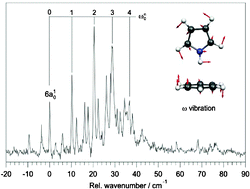N–H⋯π hydrogen-bonding and large-amplitude tipping vibrations in jet-cooled pyrrole–benzene†
Abstract
The N–H⋯π

- This article is part of the themed collection: Weak hydrogen bonds – strong effects?
* Corresponding authors
a
Departement für Chemie und Biochemie, Universität Bern, Switzerland
E-mail:
leutwyler@iac.unibe.ch
Fax: +41 31 6313994
Tel: +41 31 6314479
The N–H⋯π

 Please wait while we load your content...
Something went wrong. Try again?
Please wait while we load your content...
Something went wrong. Try again?
C. Pfaffen, D. Infanger, P. Ottiger, H. Frey and S. Leutwyler, Phys. Chem. Chem. Phys., 2011, 13, 14110 DOI: 10.1039/C1CP20793H
To request permission to reproduce material from this article, please go to the Copyright Clearance Center request page.
If you are an author contributing to an RSC publication, you do not need to request permission provided correct acknowledgement is given.
If you are the author of this article, you do not need to request permission to reproduce figures and diagrams provided correct acknowledgement is given. If you want to reproduce the whole article in a third-party publication (excluding your thesis/dissertation for which permission is not required) please go to the Copyright Clearance Center request page.
Read more about how to correctly acknowledge RSC content.
 Fetching data from CrossRef.
Fetching data from CrossRef.
This may take some time to load.
Loading related content
